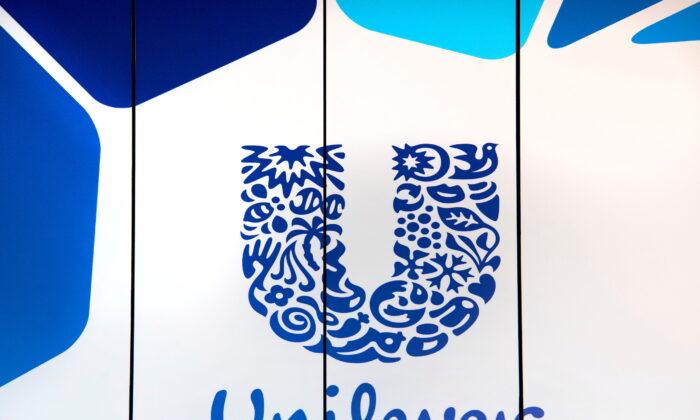Unilever’s battle with rising costs will take center stage at its third-quarter results on Thursday, with investors focused on whether the consumer goods giant will cut its profit margin forecast for the second time this year.
Crude oil prices hit three-year highs on Monday, vegetable oil prices are at multi-year highs, and packaging, transport, and labor costs are also rising as economies recover from the pandemic—a headache for central bankers and companies alike.
Tide detergent maker Procter & Gamble (P&G) on Tuesday hiked its full-year forecast for commodity and freight costs by about $400 million, or more than 20 percent.
Analysts warn Unilever could be particularly exposed because, unlike household goods specialist P&G, it also has a big food business, selling products including Knorr soups, Magnum ice-cream, and Hellmann’s mayonnaise.
That means exposure to edible oils, milk, and crude derivatives, such as caustic soda (used in making ice-cream), whose prices have also surged over the past three months.
Unilever also makes about 60 percent of its turnover in emerging markets, where inflation is fiercest.
“Since the second quarter, inflation has continued to creep up and another [margin] revision is possible,” Barclays analyst Warren Ackerman wrote in a note.
In July, Unilever cut its operating margin forecast to “about flat” from “slightly up.”
In contrast, packaged food rival Nestle kept its full-year operating margin guidance on Wednesday, helped by strong coffee sales and price hikes.
Analysts expect Unilever to report a 0.2 percentage point drop in full-year underlying operating margins, according to a company-supplied consensus. That margin was 18.5 percent in 2020.
Unilever has tried to offset costs by raising average prices by 2.2 percent, but Ackerman said that was hard in places like South East Asia where pandemic-hit consumers are switching to cheaper brands and local competition is tough.
JPMorgan Cazenove analysts estimate Unilever may need to raise prices by as much as 13 percent over the next two years to offset raw material and packaging pressures, which they say could reach 16 percent this year, at constant currencies and including hedging.
Packaging and raw materials represent about 70 percent of Unilever’s total annual cost of goods of about 23 billion euros ($26.7 billion). A 15 percent increase translates to about 3.5 billion euros in additional costs.
Despite the pressures, Unilever said in July it was confident of delivering full-year underlying sales growth within its mid-term target range of 3-5 percent.
Some analysts are less bullish, though, saying recent lockdowns in Indonesia, Vietnam, and Thailand will have curbed spending. Jefferies cut its third-quarter underlying sales growth forecast to 2.1 percent from 3.7 percent. Analysts on average expect a 2.2 percent rise.
There are other potential catalysts for Unilever’s shares, as it works to sell a big part of its 2 billion euro tea business and is also reportedly in the sights of a top activist investor.
But for now, the attention is on whether it can transfer rising costs onto customers.
“The shares have been weak, suggesting the market does not think Unilever can pass them all on and that therefore the margin is at risk,” said Tineke Frikkee, head of UK Equity research at Unilever shareholder Waverton Investment Management.






Friends Read Free